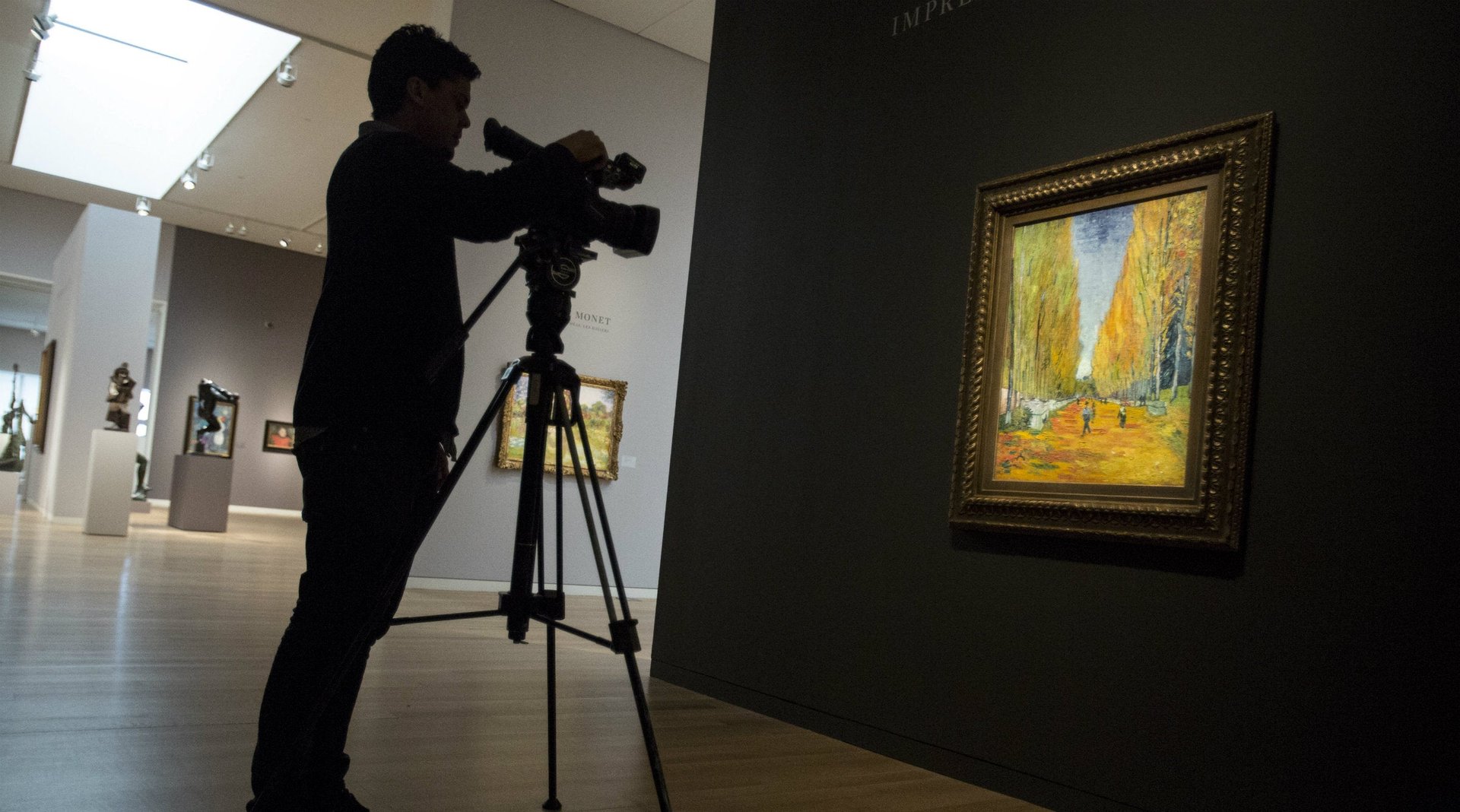A Chinese-speaking mystery buyer paid $66 million for van Gogh’s L’Allée des Alyscamps
Bidders at high-profile, big ticket art auctions are usually careful to remain discreet and far from the action, placing their orders through agents on the phone. But the buyer of the top-priced artwork at Sotheby’s massive April 5 auction of impressionist and modern art placed his winning bid right from the room, paying $66.3 million for the Vincent van Gogh painting L’Allée des Alyscamps. His identity remains a mystery, as ArtNet News reported, but his very presence at the New York auction was notable:


Bidders at high-profile, big ticket art auctions are usually careful to remain discreet and far from the action, placing their orders through agents on the phone. But the buyer of the top-priced artwork at Sotheby’s massive April 5 auction of impressionist and modern art placed his winning bid right from the room, paying $66.3 million for the Vincent van Gogh painting L’Allée des Alyscamps. His identity remains a mystery, as ArtNet News reported, but his very presence at the New York auction was notable:
He sat about halfway back in the room. In jeans and a hooded jacket, his attire was a departure from the business suit more typically worn by buyers. A Japanese dealer we spoke with after the auction said the buyer, whom he sat next to, was speaking Chinese on the phone but denied being Chinese.
The painting itself, of rows of poplar trees in autumn, was painted in 1888, a time Sotheby’s calls “the very moment in van Gogh’s career when his most legendary expressions of great beauty and exuberance were captured on canvas.” It was also completed a month before he sliced off part of his ear. The painting was originally estimated to go for $40 million.
It’s the second-highest price ever publicly paid for a van Gogh, after the $82.5 million paid by a Japanese collector for Portrait of Dr. Gachet in 1990, beating out the $61.8 million paid for Still Life, Vase with Daisies, and Poppies last year by Chinese businessman Wang Zhongjun.
During the auction, unnamed Asian buyers also purchased a Picasso for $29 million, and a Monet for $20.4 million, while an unnamed American also bought Monet’s “Nympheas” for $54 million, all above estimates. The entire auction raised $368 million, more than expected, and was Sotheby’s second-highest haul for impressionist and modern art after last November’s $422 million auction.
There are some interesting global financial dynamics at play. The overall art and antiques market reached record sales of €51 billion last year, spurred on in part by private collectors looking for alternate investments, as Quartz reported in March:
With financial markets and tax havens becoming more regulated, the 1% is increasingly relying on art and art fairs instead to store their cash. Then they stash the art away in a steadily growing number of grim looking art warehouses that blight the European landscape—often in Switzerland, but increasingly also in Singapore and Hong Kong.
Plenty of that cash is coming from China, where buyers purchased 22% of all global art last year. China’s ongoing crackdown on corruption means that the government is tracking wealthy citizens around the globe, including any high-profile real estate or asset purchases. That means the identity of the hoodie-wearing top buyer at last night’s New York auction is likely to be of interest far beyond the art world in the days to come.